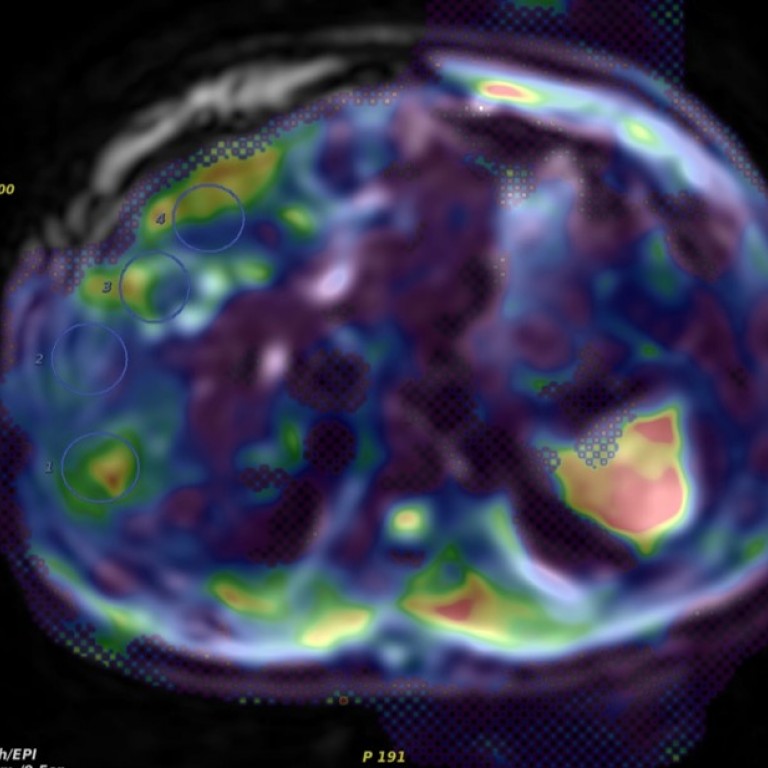The Paul C. Hodges Excellence Award is bestowed upon those individuals whose careers have been defined by outstanding achievement in the field of Radiology through accomplishments in education, research, leadership and/or service to the profession; exceptional service to the Department of Radiology at the University of Chicago may also be considered as a sole criterion for the Award.
Hodges Society Members may nominate individuals for the Award; nominees must be members of the Hodges Society (i.e., any physician or scientist who has spent at least one year in training in the Department of Radiology at the University of Chicago, or who has served on the clinical or basic science faculty of the Department). Only nominations that are accompanied by a statement indicating the merits of the nominee(s) will be considered; although the statement may be brief, we encourage you to provide as much information as you can in order to justify your nomination.
Nominations are to be collected through October 15th after which the names will be distributed to the selection committee. A final decision will be rendered at the Hodges Society Board Meeting in late November. The Award will be presented at the annual Hodges Society reception during RSNA week of the following year.
You may provide a nomination by clicking here. Please include a brief statement indicating the merits of the nominee.
Previous recipients of the Hodges Excellence Award are listed below.
Christopher Comstock, MD, is an attending radiologist and director of Breast Imaging Clinical Trials at Memorial Sloan-Kettering Cancer Center. He earned his medical degree from Tulane in 1990 and finished his residency in radiology in 1995 at the Ochsner Clinic Foundation in New Orleans. Following his residency, he completed a fellowship in Breast Imaging at the University of Chicago. Dr. Comstock then worked as an Assistant Professor of Radiology at the University of Chicago and later at Northwestern University Hospital’s Lynn Sage Breast Center. From 2003 to 2009, Dr Comstock was the director of breast imaging at The University of California San Diego. In 2006, he completed a 2-year ACRIN fellowship in clinical trials in medical imaging.
His current research includes the evaluation of the supplemental yield of whole breast screening ultrasound to screening tomosynthesis and contrast-enhanced digital mammography and abbreviated breast MRI. He is Co-PI of an active multicenter trial titled Effect of Preoperative Breast MRI on Surgical Outcomes, Costs and Quality of Life of Women with Breast Cancer (Alliance A011104/ACRIN 6694) and Study chair of the recent ECOG-ACRIN trial EA1141, “Comparison of Abbreviated Breast MRI and Digital Breast Tomosynthesis in Breast Cancer Screening in Women with Dense Breasts.”
Dr. Comstock has co-authored textbooks on abbreviated breast MRI and breast cancer imaging, written several book chapters, been involved in numerous breast imaging publications, and has given over 500 invited lectures. His past professional service includes: Chair of the ACR Breast Ultrasound Accreditation program, ABR Oral Board examiner, member of the NCI BOLD task force, Chair of the RSNA Breast Refresher course program, and Chair of the ACRIN Institutional Participants committee. He is currently the Imaging Co-Chair of the ECOG-ACRIN Breast Committee and ACR Committee on BI-RADS Breast MRI Chair. In 2014, Dr Comstock was inducted as a Fellow of the American College of Radiology.
Heang-Ping Chan, PhD, received her Ph.D. degree in Medical Physics from the University of Chicago. She then joined the University of Chicago as faculty rising to associate professor in 1987. She moved to the University of Michigan in 1989. She is currently the Paul L. Carson, PhD Collegiate Professor of Radiology. She is also the director of the Computer-Aided Diagnosis-Artificial Intelligence (CAD-AI) Research Laboratory in the Department of Radiology. Her research focuses on diagnostic imaging, medical image analysis, and the application of machine learning and artificial intelligence methods for clinical decision support. She published the first study demonstrating CAD could improve radiologists’ detection of subtle breast cancer in mammography. She has been a PI on research grants from NIH and other funding agencies for over 35 years. and authored or co-authored over 250 peer-reviewed journal articles, over 250 conference proceedings papers, and over 540 conference presentations. She was dedicated to mentoring the next generation of researchers in the development of AI methods in medical imaging applications. Through AAPM, she works to promote best practices and guidelines on training and validation methodologies, quality assurance, and user training for decision support and AI systems in clinical practice, ensuring the trustworthy, equitable, and fair use of AI. She is a fellow AAPM, IOP, and SPIE.
Robert M. Nishikawa received his PhD in Medical Biophysics in 1990 from the University of Toronto. While at the University of Chicago, he developed computer-aided diagnosis systems for classifying and detecting clustered calcifications in mammograms resulting in seven patents that were licensed and commercialized. He is currently a Professor and director of the Imaging Research Lab in the Department of Radiology at the University of Pittsburgh. He has over 250 publications in breast imaging concentrating on computer-aided diagnosis, technology assessment, and quantitative imaging. He has had 35 externally funded grants and contracts. He has received 24 awards including two for “best” paper, two for innovation, and one for teaching. He is a fellow of AAPM, SBI, AIMBE, and SPIE; and he is a Distinguished Investigator, Academy of Radiology Research. He has been a consultant for numerous medical imaging companies on digital imaging and computer-aided diagnosis. His current research interests are technology assessment and observer performance; specifically, he is interested in optimal ways of implementing AI tools clinically.
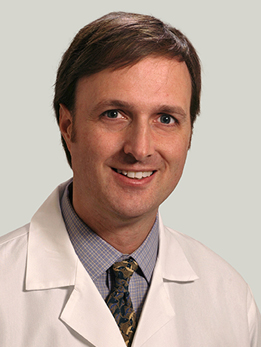
Dr. Straus received his MD degree from the University of Chicago, where he also completed his Residency in Diagnostic Radiology and his Fellowship in Angiography/Interventional Radiology. He has been a dedicated faculty member at the University of Chicago since 1998 as one of the most productive and caring radiologists at our institution. During this time, he has served on the Board of the Paul C. Hodges Alumni Society, including as its President, and is the driving force behind all of its activities including fundraising efforts. Within the Department of Radiology, Dr. Straus has served as the Director of Medical Student Education for 2 decades, and his innovative curricular efforts have not only increased the role of Radiology in student education, but have also influenced how imaging is taught throughout the four years of training. As a highly-regarded educator, his career and scholarly endeavors have likewise focused on development of medical student education in radiology, for which he is well-recognized nationally. He has been an active member and former president of the Alliance of Medical Student Educators in Radiology, and has championed a uniform curriculum nationally for medical students. He remains Chair of the Long Range Planning Committee of this Alliance, and has received the Alliance’s Excellence in Education Award, given to the individual who has contributed most significantly to medical student radiology education in the United States. He is currently a member of the Board of Directors of the Association of University Radiologists, and is President of the Association’s Research and Education Foundation after having served as the Chair of its Long-Term Planning Committee, developing grant programs that support the mission of the AUR. He has held multiple additional leadership positions in a variety of societies, and his administrative contributions to the Department and University are copious and diverse. His many publications and presentations span both the clinical and educational realm; a substantial percentage have included medical students and residents as co-authors, often first-authors, in keeping with his educational orientation. His work has been shared nationally and abroad, and he has served as a moderator at national meetings and has given numerous invited and continuing medical education lectures nationally and internationally. Dr. Straus has received numerous honors for his achievements, including elections as Fellow of the American College of Radiology, and as Inaugural Fellow of the Association of University Radiologists.
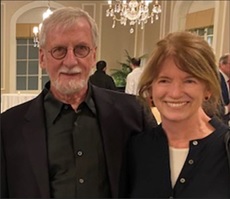
Dr. Schmidt received his MSc degree in medical physics and his medical degree from the University of Chicago, where he also completed his residency in radiology in 1986. He was then appointed as an Assistant Professor in the Department of Radiology. In 2002, he became Professor of Radiology and Director of Breast Imaging Research at the University. Dr. Newstead received her medical degree from the University of Edinburgh in Scotland and completed an internship at Genesee Hospital in Rochester, New York. She then emigrated to the United States and completed a residency in radiology at Strong Memorial Hospital in Rochester and Temple University Hospital in Philadelphia. Following academic appointments at Tufts and NYU, Dr. Newstead joined the faculty at the University of Chicago as an Associate Professor in 2002, and was soon promoted to Professor and served as Section Chief, as she had at NYU. Drs. Newstead and Schmidt oversaw the Breast Imaging Service at the University of Chicago during a time of rapid growth in both patient volume and innovative technology. Their shared and cumulative contributions, as members of the University of Chicago community and beyond, have helped to define the field of breast imaging, including developing procedures such as stereotactic breast biopsy and percutaneous 14-gauge needle biopsy of abnormal axillary lymph nodes identified by ultrasound and by application of multi-parametric MRI for breast cancer screening and diagnosis. In addition, Dr. Schmidt, who started as a physicist, was lucky enough to work with talented medical physicists in the department. Dr. Schmidt was a pioneer in computer aided detection (CADe) for mammography screening, and Dr. Newstead was a pioneer in computer-aided diagnosis (CADx) in breast MRI. Last year she published a book, Breast MRI Interpretation with over 2,800 images, and with access to large downloadable training datasets in the cloud allowing radiologists to read many of the book figures as in clinical practice. Together, Bob and Gillian developed one of the country’s leading investigative breast imaging programs, with work supported by grants from the American Cancer Society, the National Cancer Institute, and industry and philanthropic sources, while maintaining a cutting edge clinical Breast Imaging Section. They proved themselves leaders in the field of breast cancer imaging, making critical contributions to the development of new strategies for breast cancer management, having numerous publications in top medical and radiology journals, and being involved in several medical organizations.
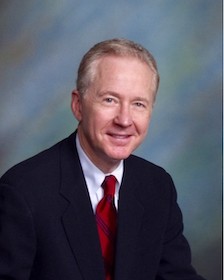
Milton J. Guiberteau received his MD degree from Baylor College of Medicine in 1971. After serving a rotating radiology internship at the University of Chicago, he completed his residency in radiology at Massachusetts General Hospital while serving as an NIH Research Fellow and Harvard Teaching Fellow, and subsequently completed a clinical fellowship in nuclear medicine at Harvard. Immediately following training, Major Guiberteau became Chief of Nuclear Medicine Service at the U.S. Army Second General Hospital in Landstuhl, Germany, serving as Consultant to the Surgeon General, 7th US Army Medical Command in Europe. In 1978, he joined the faculty of the Department of Radiology at the University of Texas Medical School, Houston, and subsequently served as chief of Nuclear Medicine and Chairman of the Department of Radiology at St. Joseph Medical Center. In 2012, he joined the faculty of Baylor College of Medicine as Professor of Radiology and Nuclear Medicine. Dr. Guiberteau has served as President of the American College of Radiology (ACR) and is recipient of the ACR Gold Medal for distinguished contributions to the profession of Radiology. Additional awards and service include: past President and CEO of Greater Houston Radiology Associates; President and recipient of the Gold Medal of the Texas Radiological Society; Chair of the Texas Medical Association Committee on Nuclear Medicine; President of the Houston Radiological Society and recipient of its Outstanding Achievement Award; member of the Board of Chancellors of the American College of Radiology and Chair of the Commission on Nuclear Medicine; President of the Southwestern Chapter of the Society of Nuclear Medicine; and Vice-Chair of the US Nuclear Regulatory Commission Medical Use of Radioisotopes Advisory Committee. He is a Fellow of the American College of Radiology and of the American College of Nuclear Physicians. He has served as President of the Bavarian-American Radiological Society, is an elected member of the National Council of Radiation Protection, and is a recipient of the Outstanding Teacher Award at the University of Texas Medical School, Houston, and the Meritorious Service Award of the American Board of Radiology. In 2011 he was named Distinguished Alumnus in the Department of Radiology at Massachusetts General Hospital/Harvard Medical School. He is Past-President and Chairman of the Board of Governors of the American Board of Radiology, having also served on the Board of Trustees. Dr. Guiberteau has served as a visiting professor at many academic and community medical institutions world-wide as well as an invited lecturer in many educational programs, both nationally and internationally, including numerous named lectureships. In addition to being an author of numerous scientific and editorial articles published in peer-reviewed literature, Dr. Guiberteau is the co-author of a highly-regarded textbook of nuclear medicine which has remained a staple in education and reference throughout its many editions.
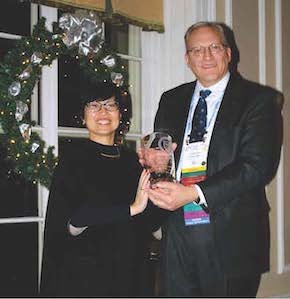
Charles E. Kahn, Jr. received his MD degree from the University of Illinois College of Medicine in Chicago in 1985. He completed his Residency in Diagnostic Radiology at the University of Chicago, where he was subsequently hired as an Assistant Professor. Dr. Kahn endeavored to improve radiology care and education at the University of Chicago as early as his residency, developing CHORUS, an online educational tool for the diagnostic radiology residents. This tool served as the platform for developing the ARRS Gold Miner tool for point-of-care learning. Dr. Kahn earned a Master’s Degree in Computer Science at the University of Wisconsin in Madison in 2003, but the bulk of his professional career has been spent at the Medical College of Wisconsin where he attained the rank of Professor of Radiology and served as Chief of the Division of Informatics. He was also Co-Director of the Doctoral Program in Medical Informatics at the University of Wisconsin in Milwaukee, where he was an Adjunct Professor of Computer Science. He has since transitioned to the University of Pennsylvania as Professor and Vice-Chair of Information Science in the Department of Radiology, and Senior Fellow at the Institute for Biomedical Informatics and at the Leonard Davis Institute of Health Economics. The overarching theme of Dr. Kahn’s work is integration of information technologies to facilitate training and care delivery. He served the Vice-Chair of the American College of Radiology Committee on Information Standards and Interoperability and the Co-Chair of the DICOM Standards Committee. His work has defined how we share images and imaging data across multiple platforms and electronic health record systems to facilitate patient care within and across institutions. His work on standardized reporting has helped decrease variation in how we report our findings. His work on PORTER, a University of Pennsylvania product that annotates the radiology report for the patient, has the potential to ease the burden on patients by allowing them to access lay summaries and help them make sense of their care. Dr. Kahn is the author/co-author of more than 100 articles, and has given more than 100 presentations at national and international meetings. In 1993, he was honored as an American Roentgen Ray Society Scholar, and has since served as the President of the Society. He received the Gold Medal from the Society in 2016. Dr. Kahn has built a legacy of work in information technologies to improve the quality and safety of patient care.
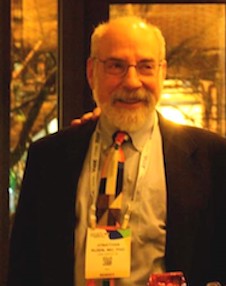
Jonathan M. Rubin received his MD degree from the University of Chicago in 1974. He subsequently received his PhD degree from the Department of Biophysics and Theoretical Biology in 1977, and completed his Radiology Residency at the University of Chicago during that same year. He was Chief Resident in the Department of Radiology from 1977-1978, after which he served as an Instructor, and subsequently as Assistant Professor and Clinical Chief of Ultrasound and Body Computed Tomography. Dr. Rubin joined the University of Michigan faculty as an Associate Professor in the Department of Radiology in 1984, and was promoted to Professor in 1989. He served as the Director of the Division of Ultrasound at the University of Michigan since 1992. He was named Emeritus Professor of Radiology in June of 2017. Dr. Rubin is a leading abdominal imager with special expertise in diagnostic ultrasound and image-guided interventional procedures. An inquisitive and innovative research investigator, Dr. Rubin has authored over 200 scholarly articles in leading scientific publications. His research interests have included ultrasound blood volume flow measurement and perfusion imaging, ultrasound artifacts, elasticity imaging, and photoacoustic imaging. He was a leading investigator defining the application of power Doppler sonography. He has given over 130 invited lectures at national and international symposia, has over 200 presentations, exhibits, abstracts and preliminary communications, is an author or co-author on multiple book chapters, and has several patents. He has a notable history of successfully securing research funding from the National Institutes of Health as well as many societies, foundations and industry. Dr. Rubin has served on many advisory boards and committees at the institutional and national level, including the ACR, AIUM, RSNA, SRU, and NIH. He has been an associate editor for Ultrasound in Medicine and Biology and the Journal of Ultrasound in Medicine, and has served as a reviewer for over 20 journals. His deep understanding of the field, combined with his strong communications skills, have made him a remarkable teacher. Dr. Rubin was awarded the University of Michigan Medical School Innovation Award in 2005, the American Institute of Ultrasound in Medicine Joseph H. Holmes Clinical Pioneer Award in 2007, Fellow of the American College of Radiology in 2010, and the Society of Radiologists in Ultrasound Lawrence Mack Lifetime Achievement Award in 2011. He was selected to deliver the New Horizons Lecture at the 100th meeting of the Radiological Society of North America in 2014, and was installed as the William Martel Collegiate Professor of Radiology at the University of Michigan in 2015
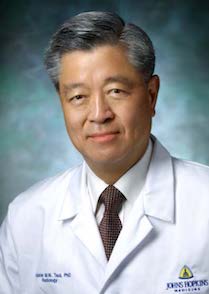
Benjamin M. W. Tsui received his PhD degree in Medical Physics from the University of Chicago in 1977, and remained at the University as a Research Associate and subsequently as Assistant Professor in the Department of Radiology. In 1982, he joined the Departments of Radiology and Biomedical Engineering at the University of North Carolina, where he was promoted to tenured Professor, and served as Director of the Medical Imaging Research Laboratory, as well as Vice Chair and Interim Chair of the Department of Biomedical Engineering. In 2002, Dr. Tsui joined the faculty at Johns Hopkins University as Professor within the Department of Radiology and Radiological Sciences and Director of the Division of Medical Imaging Physics. He also has appointments in the Departments of Electrical and Computer Engineering, Environmental Health Sciences and Biomedical Engineering. Dr. Tsui is a leader in the field of medical imaging and imaging science. His research interests have included nuclear medicine imaging, especially single photon emission computed tomography (SPECT) and positron emission tomography (PET). He is noted for the development of computer phantoms, SPECT and PET instrumentation, image reconstruction techniques, quantitative SPECT and PET methods, and image quality assessment using mathematical and human observers. He has also been active in the area of molecular imaging, especially in the development and application of small animal SPECT/CT, PET/CT and SPECT/MR imaging techniques. He is the author or co-author of over 400 articles and book chapters, and has served as editor and reviewer for many prestigious academic journals. He has been the principal investigator for numerous externally funded studies including NIH and DOD research grants, has served on many federal advisory committees and grant-review groups, and has presented over 360 lectures at national and international scientific meetings. Dr. Tsui is a Fellow of the Institute of Electrical and Electronic Engineers (IEEE) and the American Institute of Medical and Biological Engineering (AIMBE), a Fellow and Chartered Physicist of the Institute of Physics (IOP), and a member of many additional professional organizations and societies. Dr. Tsui is the recipient of the 2015 Edward J. Hoffman Memorial Award, presented by the Society of Nuclear Medicine and Molecular Imaging to recognize scientists in the field of nuclear medicine for their service and devotion to research and development of nuclear medicine instrumentation and to educating and training the next generation of scientists. He has served as a mentor and advisor to countless graduate students.

Ruth Carlos, MD, FACR, is currently Professor of Radiology in the Division of Abdominal Radiology at the University of Michigan. Dr. Carlos completed her medical school education and diagnostic radiology residency at the University of Chicago, followed by a magnetic resonance imaging and ultrasound fellowship at the University of Michigan, where she subsequently earned her Masters Degree in Public Health. She is a former Robert Wood Johnson Clinical Scholar, and trained in comparative effectiveness and health services research with a focus on cancer prevention and control. Her work has encompassed cost-effectiveness analysis, patient preference measurement and evidence synthesis in diagnostic imaging, as well as the use of health encounters, including imaging encounters such as screening mammography, as teachable moments to improve global health behavior. An NIH funded researcher, she was selected as a Distinguished Investigator of the Academy of Radiology Research (top ten percent of all academic radiology faculty). Within the Department of Radiology at the University of Michigan, Dr. Carlos has served as the Assistant Chair of Clinical Research, Director of the Faculty Research Development Program, Director of the Evidence-Based Radiology Group, and Assistant Chair of Faculty Affairs. She has mentored numerous junior faculty members, residents and medical students in health services research with an emphasis on diagnostic imaging. Her history of committee, organizational and volunteer service is extensive, including: chair of the GERRAF Board of Review; Executive Council for the American Roentgen Ray Society; chair of the Publications Committee and Roentgen Fund Research Subcommittee of the ARRS; Course Director of the RSNA Introduction to Academic Radiology program; president of the Radiology Alliance for Health Services Research; president of the Association of University Radiologists; co-chair of multiple NIH committees and boards; and several editorial boards including first Deputy Editor of the Journal of the American College of Radiology. Dr. Carlos has authored or co-authored over 100 peer-reviewed or invited publications, and has presented over 100 invited lectures at national and international organizations. She was elected Fellow of the Society of Computed Body Tomography and Magnetic Resonance Imaging in 2006, and Fellow of the American College of Radiology in 2009.
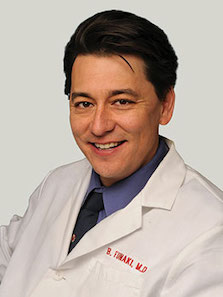
Brian Funaki, MD, is currently Professor of Radiology and Section Chief of Vascular and Interventional Radiology at the University of Chicago. Dr. Funaki completed his diagnostic radiology residency and angiography and interventional radiology fellowship at the University of Chicago after earning his medical degree at Washington University in Saint Louis. He was subsequently hired as faculty at the University of Chicago where he was promoted from Assistant Professor to Full Professor within ten years. An internationally-recognized expert in vascular and interventional radiology with research interests that have focused on vascular intervention, gastrostomy, and super-selective embolization, Dr. Funaki has authored or co-authored over 170 peer-reviewed or invited publications, as well as numerous books and book chapters. He has presented over 140 lectures at universities and national and international medical meetings. He has served as an associate editor for the Journal of Vascular and Interventional Radiology, co-editor-in-chief for Updates in Interventional Radiology, and editor-in-chief for Seminars in Interventional Radiology. Dr. Funaki has also served on multiple national committees, including several with the RSNA, ARRS, and ACR, as well as the Executive Council of the Society of Interventional Radiology. He has contributed his expertise as a course director or organizer for national meetings on multiple occasions. Throughout his career, Dr. Funaki has earned many awards and distinctions, including the Outstanding Faculty Award from the Society of Interventional Radiology and multiple teaching awards from the University of Chicago residents. He is a Fellow of the Society of Interventional Radiology, the American Heart Association and the Cardiovascular and Interventional Society of Europe. He continues to play an active role as a clinician and teacher at the University of Chicago.
